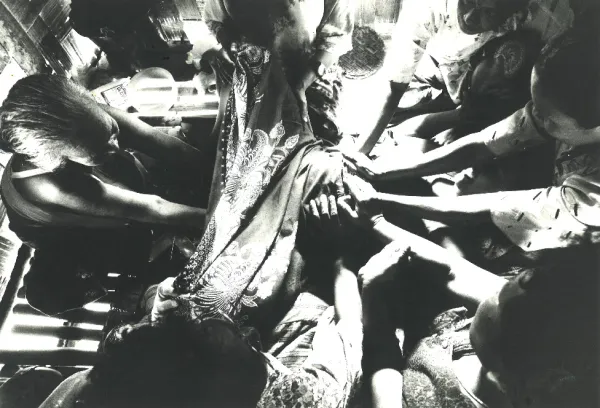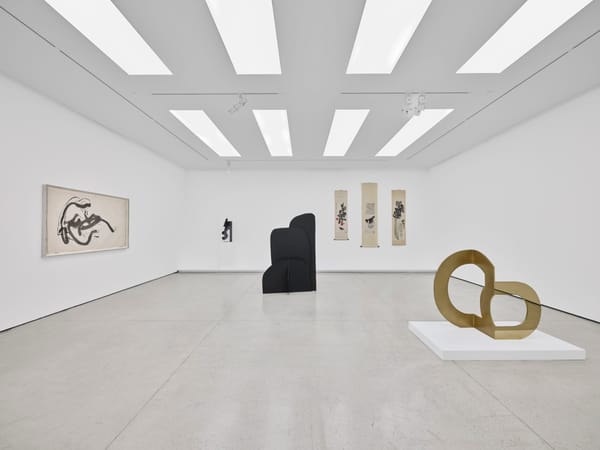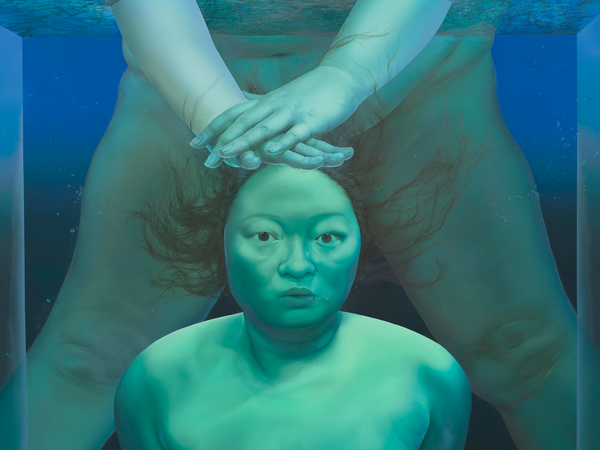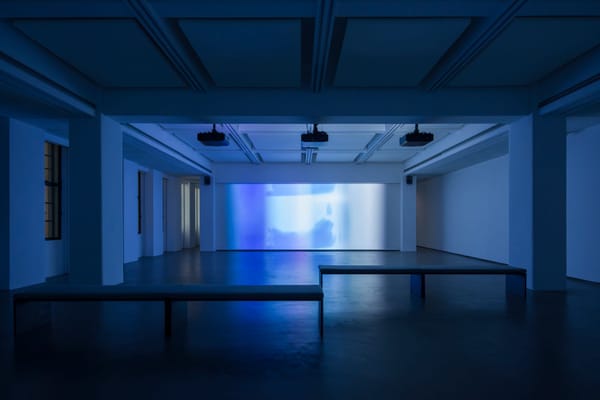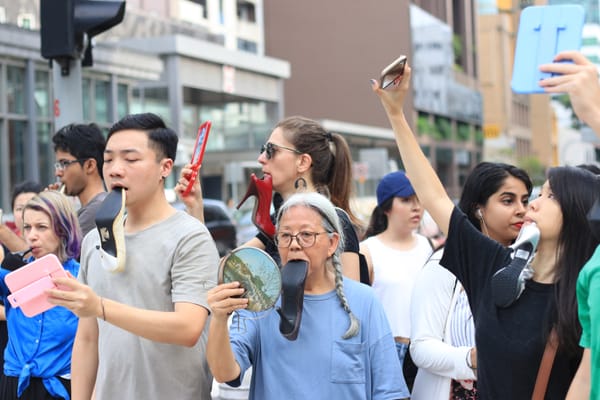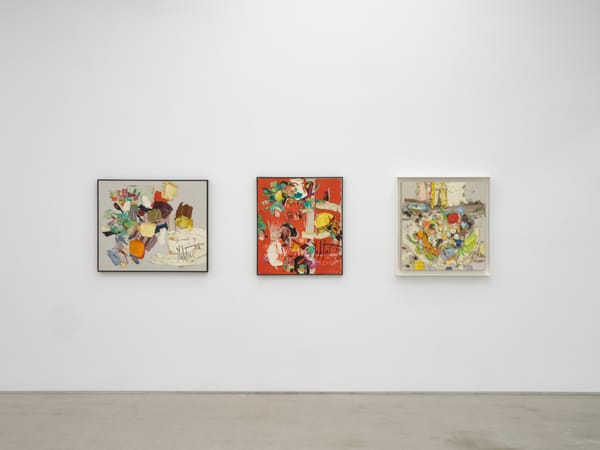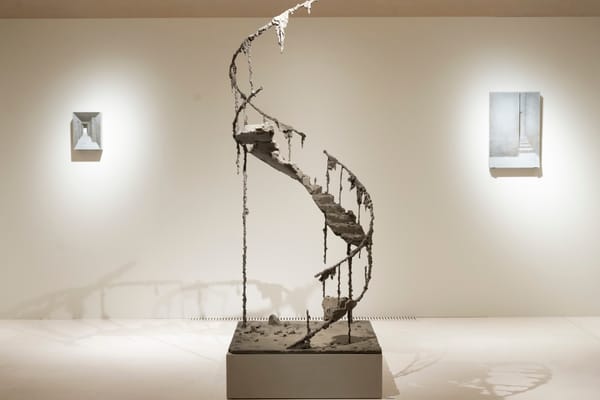Shows
How to Play in A City? Temitayo Ogunbiyi at the Noguchi Museum
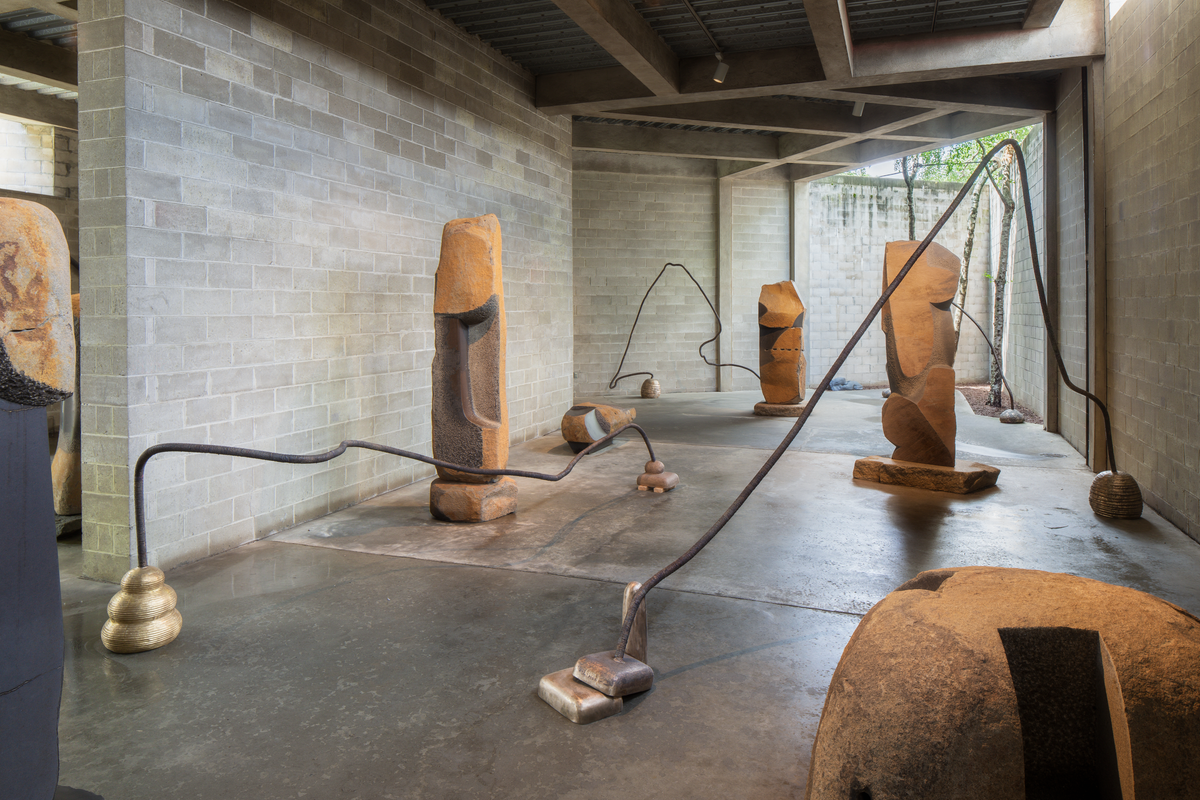
Temitayo Ogunbiyi
You will wonder if we would have been friends
The Noguchi Museum
New York
Jun 18–Nov 2, 2025
Even though everyone I know who grew up here turned out fine, it’s tough to be a child in New York—considering especially the recent high-profile fatal shootings and periodic reports of child abuse by daycare workers and nannies. The US, by the way, is also the only country where schoolchildren participate in mass shooting drills. But maybe childhood in New York isn’t entirely grim; even as a grown-up, I adore the access to green spaces and playgrounds (less so the rats that also live there) and cherish the moments when adult-sized swings are empty—a five-minute aerial pendulum trajectory can really turn a day around.
Nigeria-based American artist Temitayo Ogunbiyi shares my belief that playgrounds are not just for the young, but also the young at heart. For her first US institutional exhibition at the Noguchi Museum, titled “You will wonder if we would have been friends,” Ogunbiyi engaged in a philosophical dialogue with Isamu Noguchi, exploring the concept of play in public spaces. This focus on children and play harkened back to the 2012 exhibition “Century of the Child” at the Museum of Modern Art, which examined evolving theories and practices in early childhood development and education in the 20th century, including the importance of outdoor playgrounds, physical activities, and the Montessori approach of respecting children’s natural ability to guide their own learning.
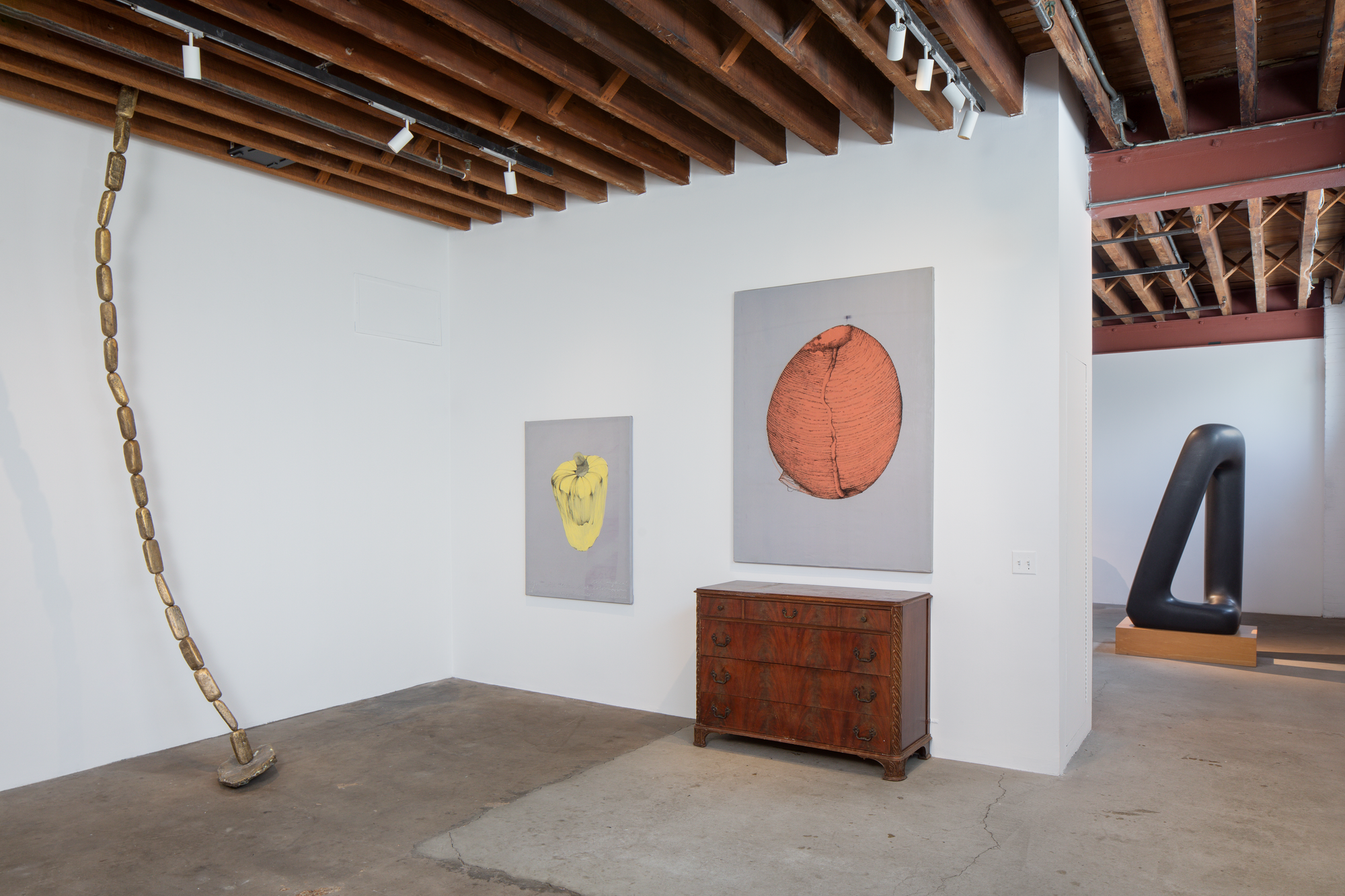
An advocate for children-led play, Noguchi attempted his first design for a playground, titled Play Mountain, in 1933. Featuring steps, slides, and a pool, the project marked his initial foray into urban design and his vision for a New York City block. However, Robert Moses, who was the parks commissioner at the time, wasn’t impressed. Decades of rejection ensued until 1965, when Noguchi’s design for Kodomo No Kuni, a temporary children’s park, was constructed in Yokohama. Around a decade later in 1976, Playscapes, the only Noguchi playground realized in the US, was built in Piedmont Park, Atlanta. These colorful, architectural structures, which Noguchi described as “sculpture of spaces,” explore the utilitarian aspects of sculpture in everyday life and its potential to improve society. As Noguchi stated, “I think of playgrounds as a primer of shapes and functions; simple, mysterious, and evocative; thus educational.”
A first-generation immigrant with Jamaican and Nigerian parentage, Ogunbiyi was born in New York and raised in Pennsylvania. After completing her degrees at Princeton and Columbia, she relocated to Lagos, where, as a mother, she struggled to find public spaces for her children to play in. To create her own designs, she used household objects such as yogurt tubs as molds and drew inspiration from Yoruba hairstyles and Victorian hairwork. This formal quality is evident in You will find mothering at every turn (Sweet Mother) (2022–25), an installation crafted from Swarovski crystals and copper alloy, evoking a floor-to-ceiling braid or lotus root links.
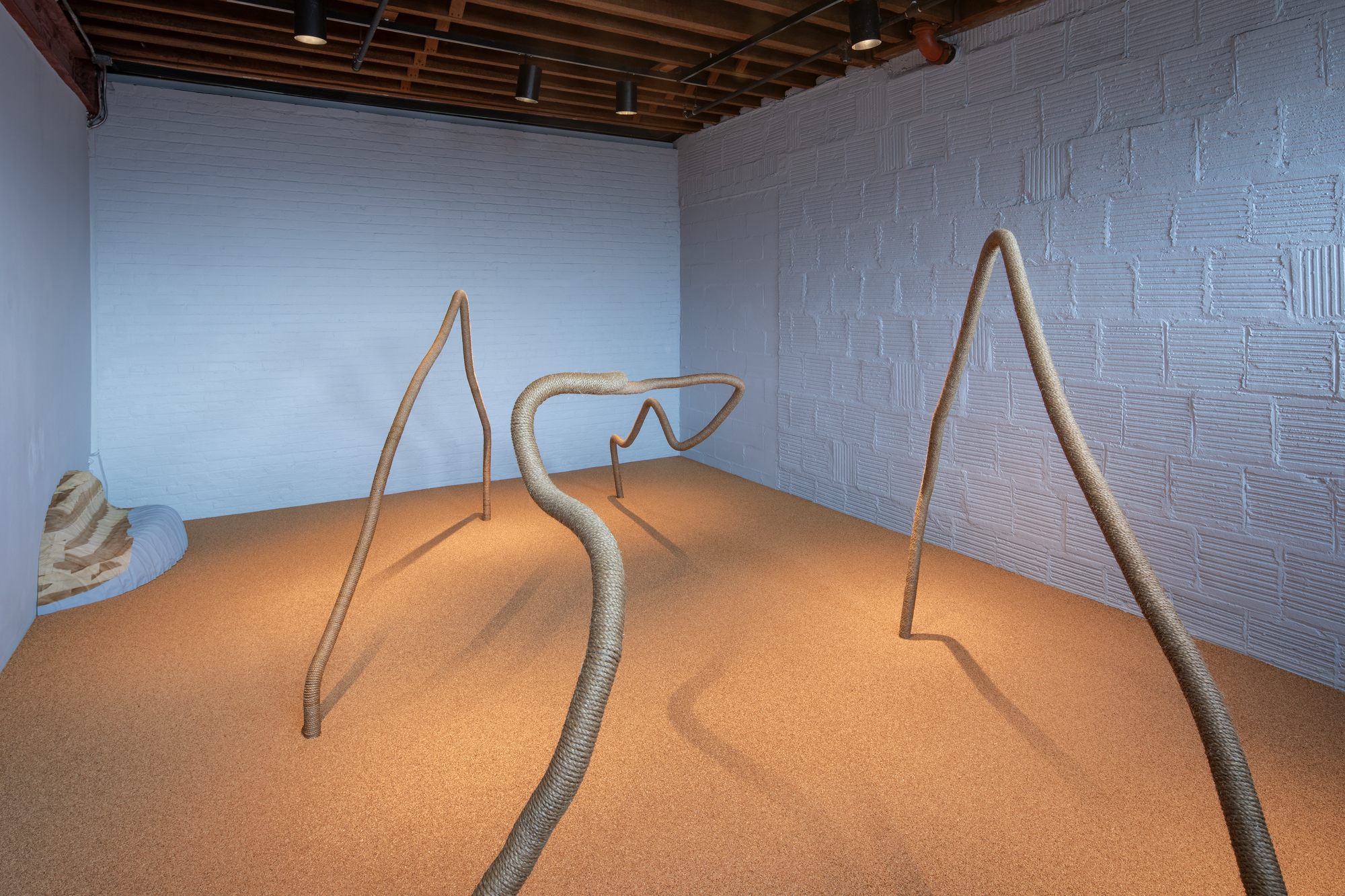
Noguchi believed that sculptures should serve as tools for leisure, fostering both social interaction and private introspection. Putting this theory into practice, Ogunbiyi invited the audience to engage intuitively with her interactive installation, titled You will pave paths of life with play (2025). Nearby, several Noguchi Play Sculpture models were on display, including Play Mountain and a 1961 proposal for Riverside Park in New York.
Music and community are central to Ogunbiyi’s practice. You will revisit paths to friendship (2025), an assemblage of copper alloy sculptures, was installed in the front courtyard among Noguchi’s stone works. Like jump ropes frozen in time, Ogunbiyi’s wiry formulations arch and twist, tracing the hypothetical routes Noguchi walked between his apartment and studio. These sculptures also doubled as instruments: during the exhibition opening, Afro-Brazilian beats performed by Batalá New York—an all-womxn, Black-led percussion ensemble—intertwined with the structures (on regular days, You will revisit paths to friendship was activated by museum guides during tours). Parading among the guests, Batalá performers banged and slid wooden rhythm sticks on their drums as well as on Ogunbiyi’s textured sculptures. The visible and audible forms of Noguchi’s commute evoke the migratory journeys of many, particularly in Queens—where his studio and the Museum are located—home to a community of over 100 nationalities speaking some 160 languages.
As Batalá performers drummed and swayed their way to the garden, new pitches and rhythms were created on the copper alloy stones of another installation, You will catalyze wishes of strangers (2025). These stones, cast from traditional West African grinding stones used in food preparation, are inscribed with phrases contributed by Queens residents in response to the artist’s prompt: “What is your practice?” Among Ogunbiyi’s favorites were “fail” and “be grounded in the moment,” which resonated with Noguchi’s own challenges with Playscapes. The work was presented alongside Noguchi’s Practice Rocks in Placement (1982–83), situated on the mulched garden bed. The rocks, used as practice stones by Noguchi’s assistants, were arranged there to reflect his appreciation for their collective contributions.
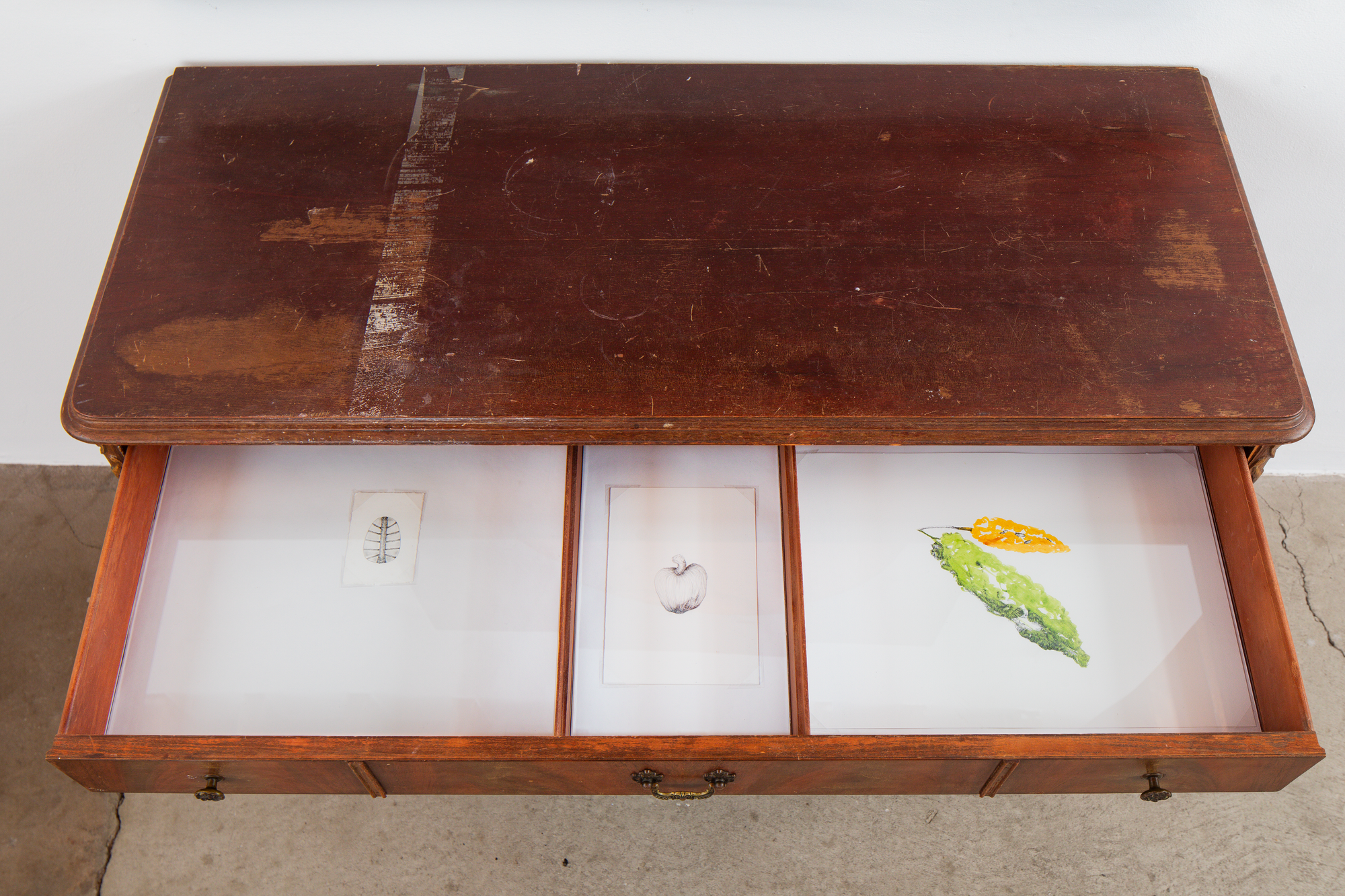
Elsewhere in the exhibition, Ogunbiyi answered her own question about her practice, displaying her daily drawings in vintage wooden chests and drawers that visitors could open and close as they desired. The drawings featured still lifes of little florets of broccoli, bulgy gourds, and curvy squashes that could also be interpreted as references to West African hairstyles. Every art student can relate to this drawing exercise, where one runs out of subjects and starts searching in the most unlikely places—such as the freezer—and strikes gold. Ogunbiyi’s day-to-day routine also encapsulated the essence of play; even in a repeated activity or gesture, there remains the possibility of surprise.
Simple and pared-down in form, the linear quality of Ogunbiyi’s creations was complemented by the raw, industrial, and refined aspects of Noguchi’s works, which distill various schools of abstraction from Constantin Brâncuși to Qi Baishi. Navigating the growing pains in a city like New York can be challenging, but even the daily grind can be fun if one holds on to fleeting joys—like the exhilaration of a swing reaching its highest point before beginning to fall—while looking for that odd vegetable to sketch.
Kelly Ma is a New York-based curator and writer.
